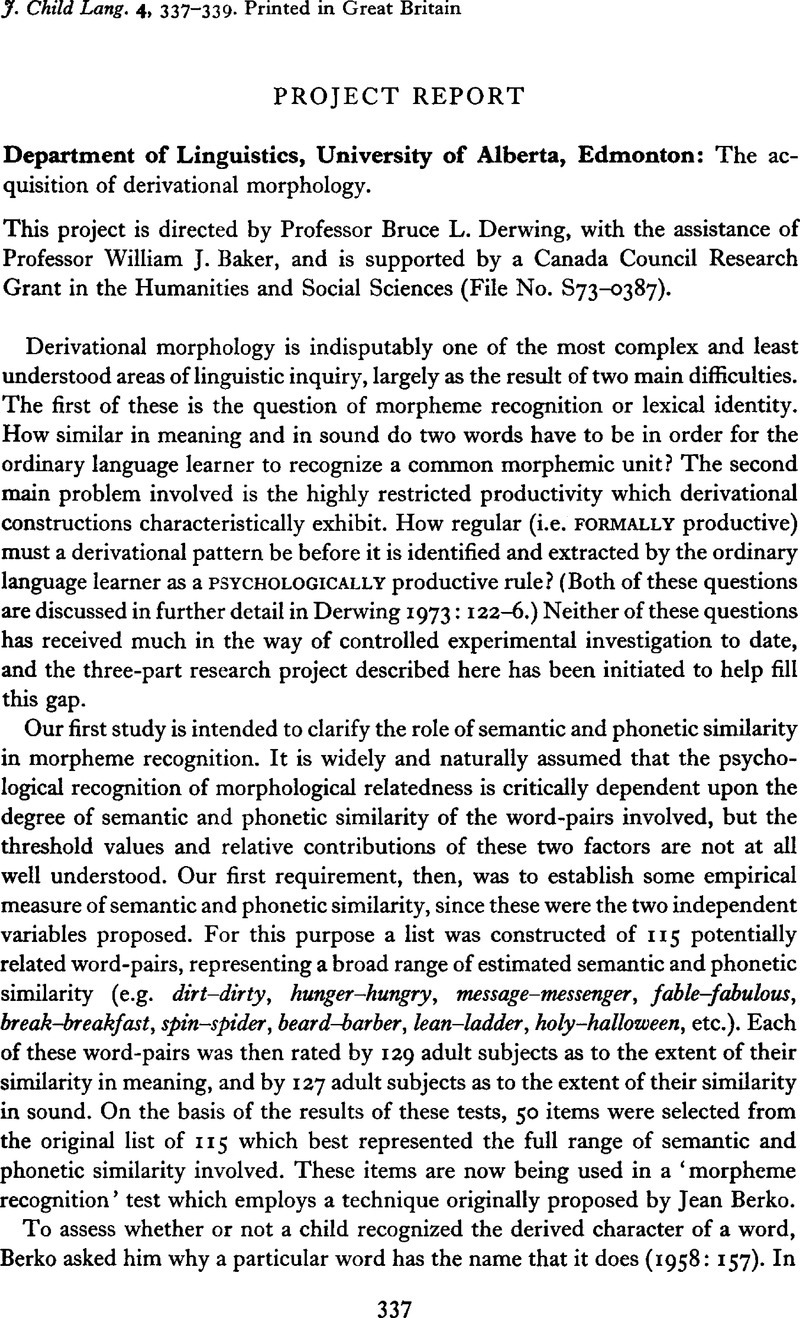No CrossRef data available.
Article contents
Department of Linguistics, University of Alberta, Edmonton: The acquisition of derivational morphology
Published online by Cambridge University Press: 26 September 2008
Abstract
An abstract is not available for this content so a preview has been provided. Please use the Get access link above for information on how to access this content.

- Type
- Project Reports
- Information
- Copyright
- Copyright © Cambridge University Press 1975
References
REFERENCES
Berko, J. (1958). The child's learning of English morphology. Word 14. 150–77.CrossRefGoogle Scholar
Carroll, J. B., Davies, P. & Richman, B. (1971). The American heritage word frequency book. New York: Houghton Mifflin.Google Scholar
Derwing, B. L. (1973). Transformational grammar as a theory of language acquisition. London: Cambridge University Press.Google Scholar
Derwing, B. L. & Baker, W. J. (1974). Rule-learning and the English inflections. Final report to the Canada Council (File No. S72–0332).Google Scholar
Horn, E. (1925). The commonest words in the spoken vocabulary of children up to and including six years of age. In National Society for the Study of Education, Twenty-fourth yearbook. Bloomington: Public School Publishing Company.Google Scholar
International Kindergarten Union, Child Study Committee (1928). A study of thevocabulary of children before entering the first grade. Washington, D.C.: The International Kinder-garten Union.Google Scholar
Rinsland, H. D. (1945). A basic vocabulary of elementary school children. New York: Macmillan.Google Scholar
Vitz, P. C. & Winkler, B. S. (1973). Predicting the judged ‘similarity of sound’ of English words. JVLVB 12. 373–88.CrossRefGoogle Scholar


